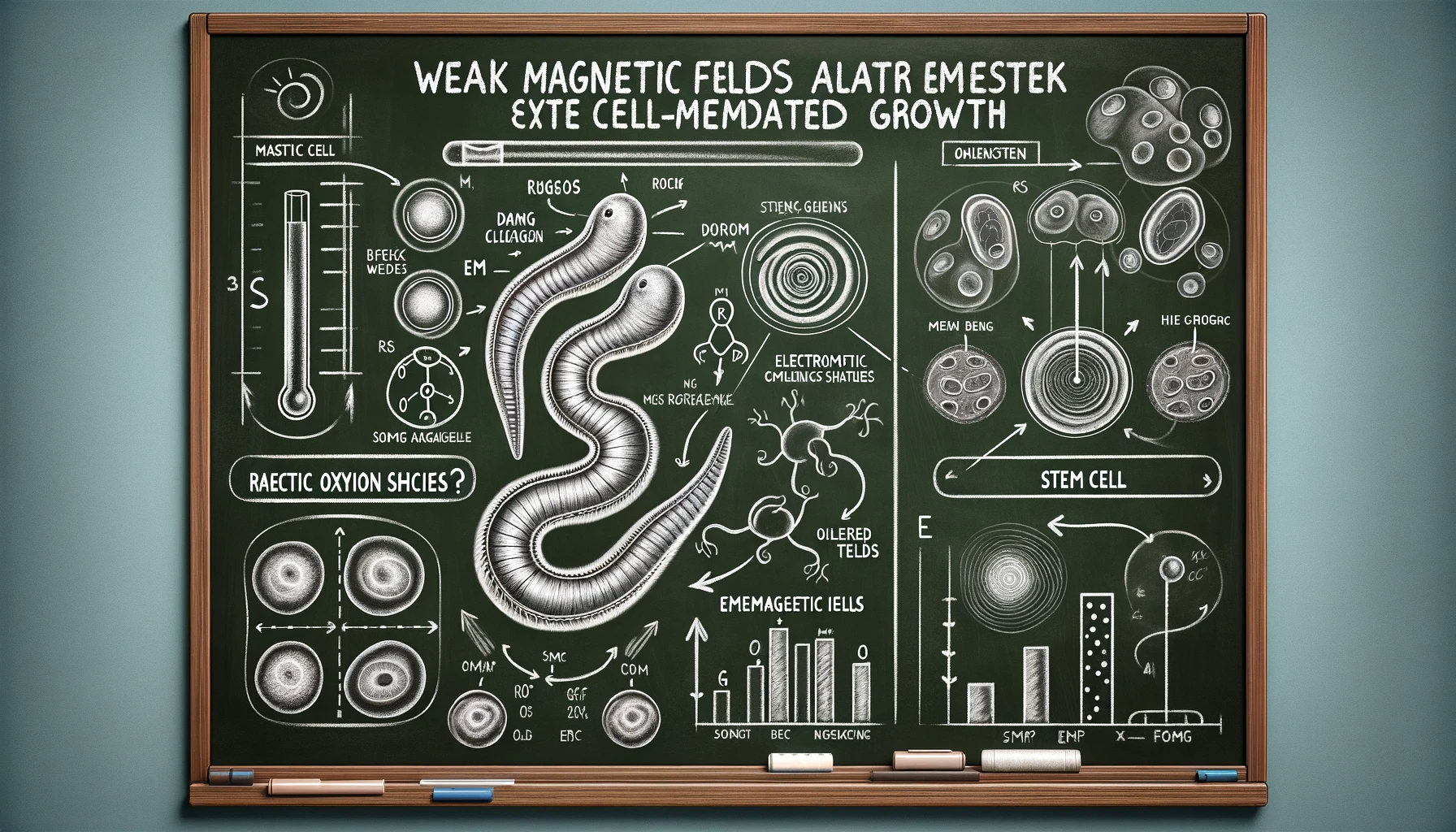The study “Weak magnetic fields alter stem cell–mediated growth,” explores the impact of weak magnetic fields on stem cell growth. It investigates how low-intensity electromagnetic fields, specifically in the context of stem cells, can affect biological processes. The research is significant in understanding the broader implications of electromagnetic exposure on cellular and biological functions. This study adds to the growing body of research examining the effects of electromagnetic fields on various aspects of health and biological systems. For a detailed understanding of the study, its methodology, results, and implications, it’s recommended to refer directly to the full text of the research paper.
Let us delve into the fascinating study “Weak magnetic fields alter stem cell–mediated growth” by Alanna V. Van Huizen and colleagues. This study explores the impact of weak magnetic fields (WMFs) on biological systems, particularly focusing on planarian regeneration as a model. The intriguing findings indicate that WMFs, even less than 1 millitesla (mT), can influence stem cell proliferation and differentiation. This influence is mediated through changes in reactive oxygen species (ROS) levels and heat shock protein 70 (Hsp70) expression.
To dissect these effects, the study utilized planarians – a type of flatworm known for their remarkable regenerative abilities. The researchers observed that exposure to different strengths of WMFs could either increase or decrease new tissue formation. This variability suggests a complex interaction between the field strength and biological systems, where both reduction and enhancement of growth are possible under different conditions.
Central to the study’s findings is the role of ROS. Typically considered harmful, ROS can also be beneficial, acting as mediators in various cellular processes, including tissue repair and cell signaling. The study found that WMF exposure affected ROS accumulation, which in turn influenced Hsp70 expression, a protein crucial for protein folding and cell survival.
The implications of this research are profound. It suggests that WMFs can modulate stem cell activity through ROS signaling, affecting both proliferation and differentiation during regeneration. This opens up potential therapeutic applications of WMFs in regenerative medicine, offering a non-invasive method to manipulate cell growth and repair.
Impact of Weak Magnetic Fields on Stem Cell Growth
A Revolutionary Discovery in Cellular Biology
The study delves into the intricate relationship between electromagnetic exposure and cellular behavior, specifically focusing on stem cells. Stem cells, known for their remarkable ability to transform into a variety of cell types, play a crucial role in growth, repair, and regeneration in the human body. This research sheds light on how even the weakest magnetic fields, often overlooked in the context of health, can influence these vital cells.
Implications for Health and Science
The findings of this study are not just a leap in cellular biology but also hold profound implications for our understanding of health in the context of electromagnetic exposure. As we navigate an environment increasingly laden with various electromagnetic fields, from mobile phones to household appliances, the impact on our biological systems becomes a subject of paramount importance.
Bridging the Gap Between Technology and Biology
This study bridges the gap between the realms of technology and biology, urging us to reconsider our interaction with everyday electromagnetic fields. It opens up a dialogue on the need for further research in this area, exploring the potential long-term effects of electromagnetic exposure on human health and development.
Conclusion: A New Perspective on Electromagnetic Fields
The theory behind how weak magnetic fields affect stem cell growth involves the intricate interplay between electromagnetic fields and cellular mechanisms. At a fundamental level, cells communicate and function through electrical and biochemical signals. Weak magnetic fields, even though they are of low intensity, can influence these cellular processes by interacting with the electrical and magnetic properties of cells. This interaction can lead to changes in cell behavior, growth patterns, and functions. The exact mechanisms are complex and depend on various factors like field strength, frequency, and the specific type of cells involved.
The revelation that weak magnetic fields can alter stem cell growth is a testament to the dynamic nature of scientific inquiry. It challenges us to look beyond the visible spectrum of health risks and consider the subtle influences that shape our biological landscape. As we continue to unravel the mysteries of electromagnetic fields, let’s embrace this knowledge with a commitment to deeper understanding and responsible innovation.








